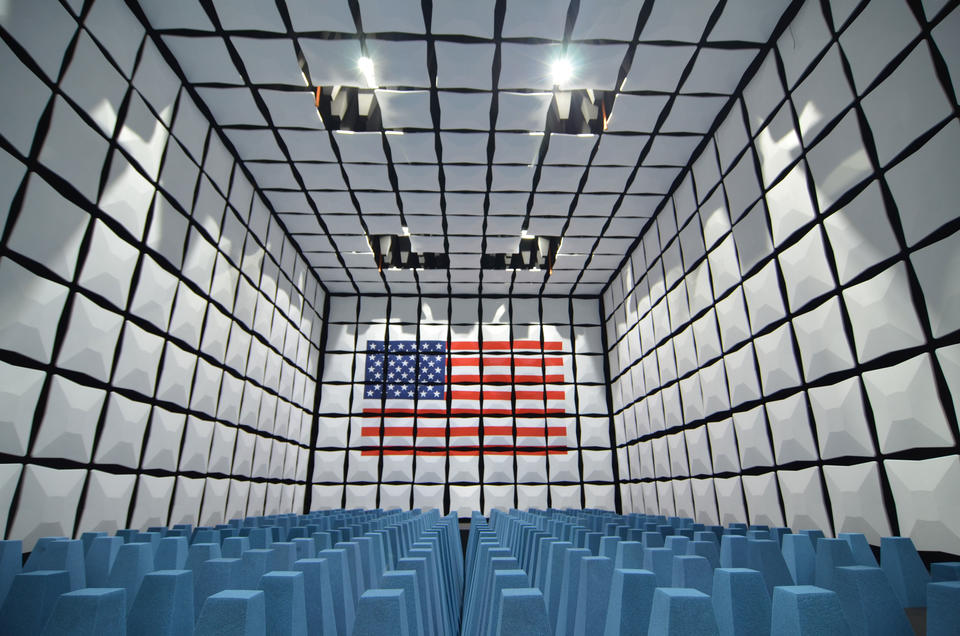National Broadband Interoperability Test Bed (NBIT)

NIST’s state-of-the-art communication anechoic chamber.
The National Broadband Interoperability Test Bed (NBIT), which opened in 2016, supports studies in wireless coexistence metrology and standards. NBIT lets researchers understand how radar, 5G and Beyond, Wi-Fi, and other wireless systems interact in an integrated environment combining large anechoic and reverberation chambers. By enabling the testing of multiple independent networks (e.g., radar, Wi-Fi, and other wireless systems) in a controlled environment, NBIT will shed light on these independent, uncoordinated systems’ ability to coexist without interference – an understanding critical to developing hardware and software capable of delivering on the promise of spectrum sharing. Unique to NBIT is the integration of live cellular networks, which enables real-world testing of this complex and increasingly ubiquitous wireless-data protocol.
Given the increased crowding of the airwaves, radiated testing with over-the-air signals (as compared to conductive testing using emulators where signals stay in silicon and copper) provides an environment better able to capture complex real-world conditions such as interference, multipath, shadowing, and other factors influencing wireless-system performance.
NBIT’s integration of large semi-anechoic (40’ x 23’ x 20’) and reverberation (17’ x 15’ x 18’) chambers enables a broad range of test conditions, from highly reflective ones that MIMO systems prefer to absorbent ones favored by traditional point-to-point systems. In addition to enabling realistic test environments, these chambers’ large volumes eliminate the risk of electromagnetic interactions among device electronics (as opposed to device antennas, the focus of radiated testing) corrupting experiments. In addition, the semi-anechoic chamber can be made fully anechoic using an RF-absorbent floor covering – or more reflective by hanging conductive curtains to create partial-multipath environments.
In addition to the chambers themselves, NBIT’s capabilities include:
- A series of cellular base stations (4G, 5G, and beyond) are connected to NIST CTL's Public Safety Communications Division cellular infrastructure.
- An expandable, MIMO-capable multi-channel transceiver, initially with four channels providing 200 MHz instantaneous bandwidth from 100 MHz to 6 GHz.
- An expandable four-channel channel emulator with 160 MHz bandwidth from 100 MHz-6 GHz and custom fading profiles.
- A single-channel signal generator with 160 MHz IQ bandwidth up to 20 GHz. Generates IEEE 802.11 a/b/g/n/ac, Bluetooth, FD/TDD LTE, LTE-A, custom pulses, and custom fading.
- A single-channel spectrum analyzer with 500 MHz bandwidth up to 43 GHz. Capable of real-time analysis of IEEE 802.11 a/b/g/n/ac, Bluetooth, FD/TDD LTE, LTE-A, 5G, and custom pulse analysis.

